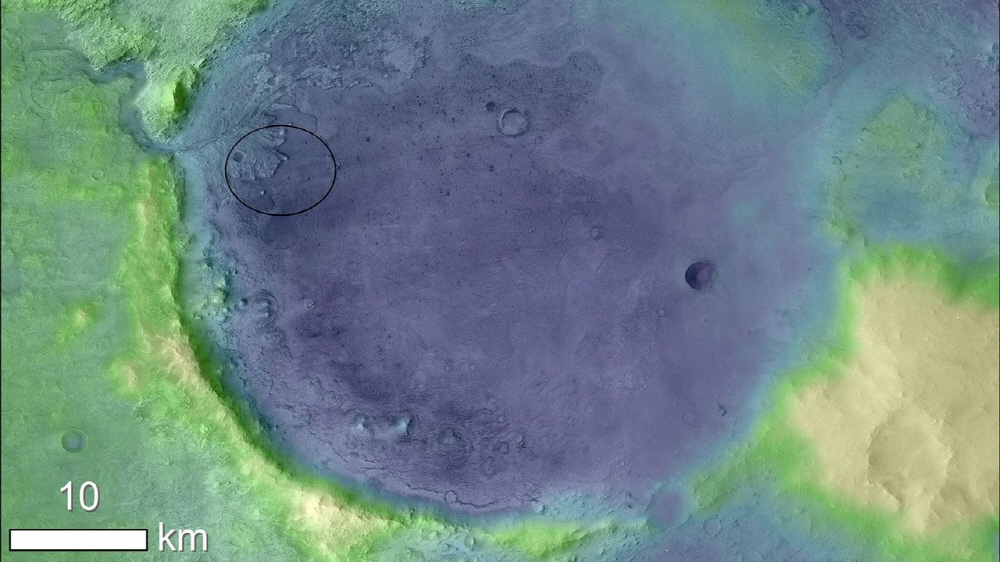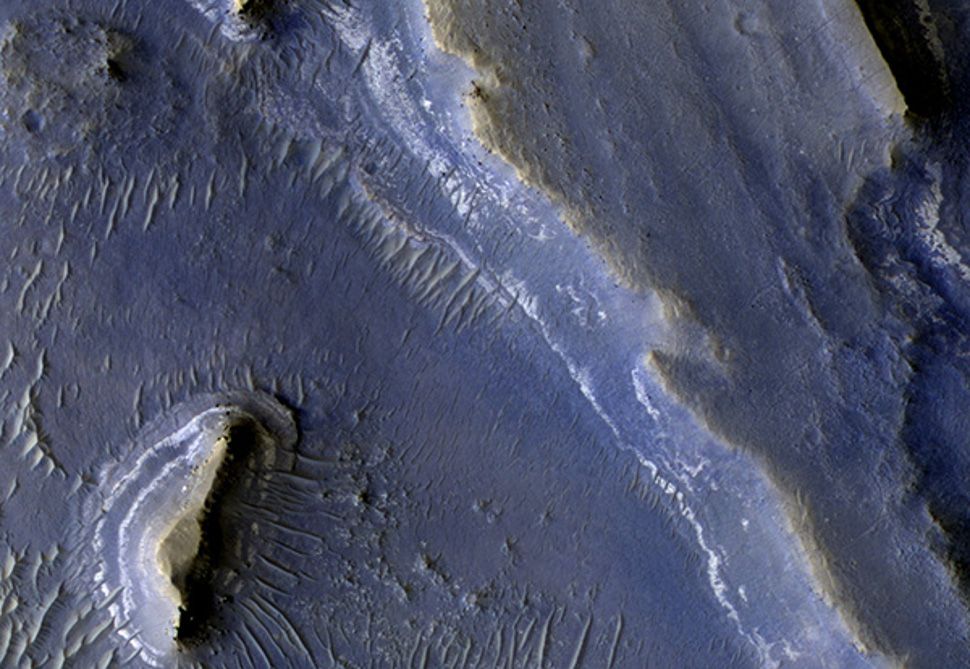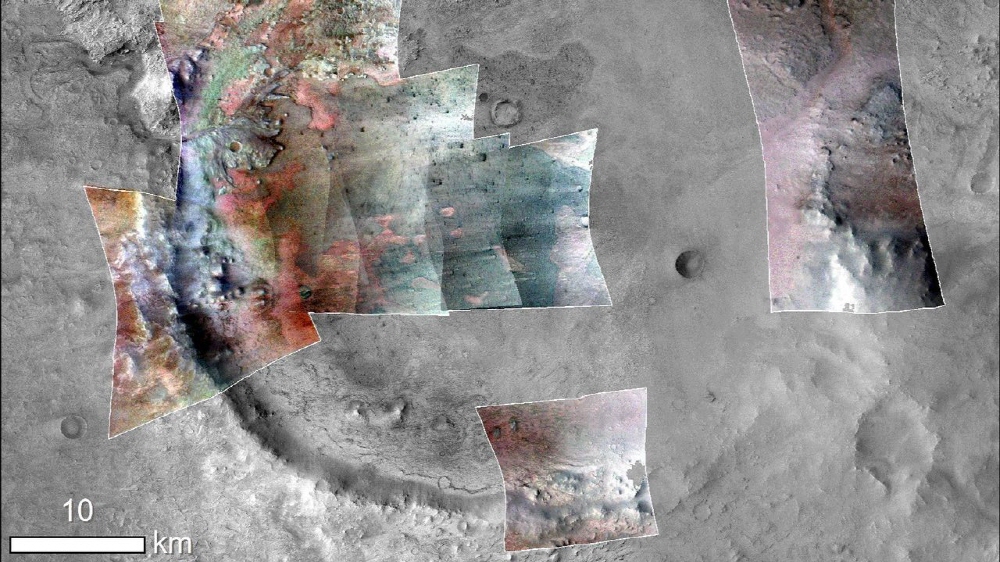
If primitive forms of life existed on Mars long ago, there are places where it wouldn’t be strange to remain fossils. It is Jezero crater. It is also the destination of the Mars rover, which NASA is scheduled to unveil in 2020.
Mars has been presumed that something has been living since the 19th century. It is not different in size from the Earth and the distance from the sun is almost the same. Mariner 4 of the United States in 1965 was the first to go to Mars to confirm this. Subsequently, the Soviet Mars 3 landed on the surface of Mars for the first time in 1971, and the US also landed Vikings 1 and 2 on Mars in 1976, opening the era of Mars exploration.
More than 20 probes have landed on Mars so far, but no trace of life has been found so far. At the same time, however, it is gradually becoming known that Mars in the distant past was equipped with a humid environment like Earth in a completely different shape than it is now.

Gathering information from past rovers and rovers orbiting Mars, we can see that Mars was a planet filled with liquid water like Earth at least 3.5 billion years ago. At that time, it can be thought that the atmosphere and magnetic field on Mars still had conditions suitable for the birth of life. It is estimated that perhaps the first primitive life was born on Mars and flew to Earth by meteorite.
If life, such as microbes, existed on Mars billions of years ago, the place where the traces of life were likely to remain is the Jeungro crater. With a diameter of 49 m, the crater appears to have been a lake billions of years ago. In the image, the trace of the deep valley is clearly visible in the northwest, and it can be seen that water was flowing in the crater, and a fan-shaped delta spreads right in front of it.
After careful consideration by NASA, it was decided to send the current Mars rover to the crater as an agent. Since it was originally a lake, it was thought that the bottom of the Jeero crater could still be rich in clay minerals, and traces of ancient primitive life may be found through the sediment layer.

Recently, there was also a discovery that significantly increased the probability of leaving traces of life in the crater with Jerome. A research team at Brown University in the United States published in the journal Geophysical Letters that they found silicic acid in an exposed rock near the ancient river delta in the Jeero crater. Silicic acid is a kind of silicon dioxide and is a mineral that fossilizes the appearance of ancient earth creatures. Of course, the research team didn’t originally start research with the aim of silicic acid. When the team selected the crater as a target for the study, the location of Nasa Rover’s landing was not yet determined. It is said that the original purpose was to analyze a wide range of products, even to the northeast Sirutis near the crater of Jero, and find new minerals and mineral combinations.
Based on the infrared spectrometer data mounted on the Mars reconnaissance satellite MRO (Mars Reconnaissance Orbiter), we analyzed using two big data processing methods and found a weak spectral signal shining with silicic acid.
Even billions of years ago, the rivers that were in the Jeero crater also carried minerals from the basin. At the point flowing from the crater, this mineral formed a fan-shaped delta, and the silicic acid discovered this time is said to have been deposited in a lower place at the edge of the delta. Because of this, it is believed that silicic acid exists in the lower layers of the delta, making it the preferred target of NASA’s new probe.
The team says these minerals and mineral combinations tell us how Mars interacted with water and rocks in the region billions of years ago. In addition, some of the action of water and rocks is considered to be helpful in creating an environment suitable for life. One of these is the lake in Jesero crater.
In another study, a research team at Purdue University reported that the presence of carbonate was found in the crater as an agent. Carbonate, along with silicic acid, is said to be a mineral that helps to find traces of life. This discovery is also based on MRO data. The carbonate was confirmed by combining data, high-resolution images, and Mars terrain data.
As a result, it is explained that a lot of carbonate was detected along the western edge of the crater with the formulation, and it was like a stain left after removing the bath water. Carbonates usually occur in shallow, warm seas and are often followed by biological activity. Earth has a role in fossilizing shells and corals, but unfortunately, the chances of finding shells and coral fragments on Mars are potentially low. However, it may be possible with small microbes like blue-green algae.
What would it look like if traces of life could be found in these silicates and carbonates? It is believed to look like microbial cells fossilized by silicic acid. It is said to be similar to the 3.4 billion-year microbial fossils found in South Africa or Australia on Earth. In fact, NASA scientists on an exploration mission to Mars in 2020 went to Australia to study examples of microbial fossils on Earth.
Fortunately, NASA’s new Mars rover will be able to see both the silicate and carbonates discovered if it safely lands in the crater in February 2021. The latest rover has a built-in laboratory function and a high-performance camera, so you can check the samples picked up on Mars as it is, and shoot the scene from close range. It can also be interesting to equip a spectroscopic sensor and compare it with MRO data. The 2020 Mars mission, which is expected in many ways, is approaching. Related information can be found here .


















Add comment